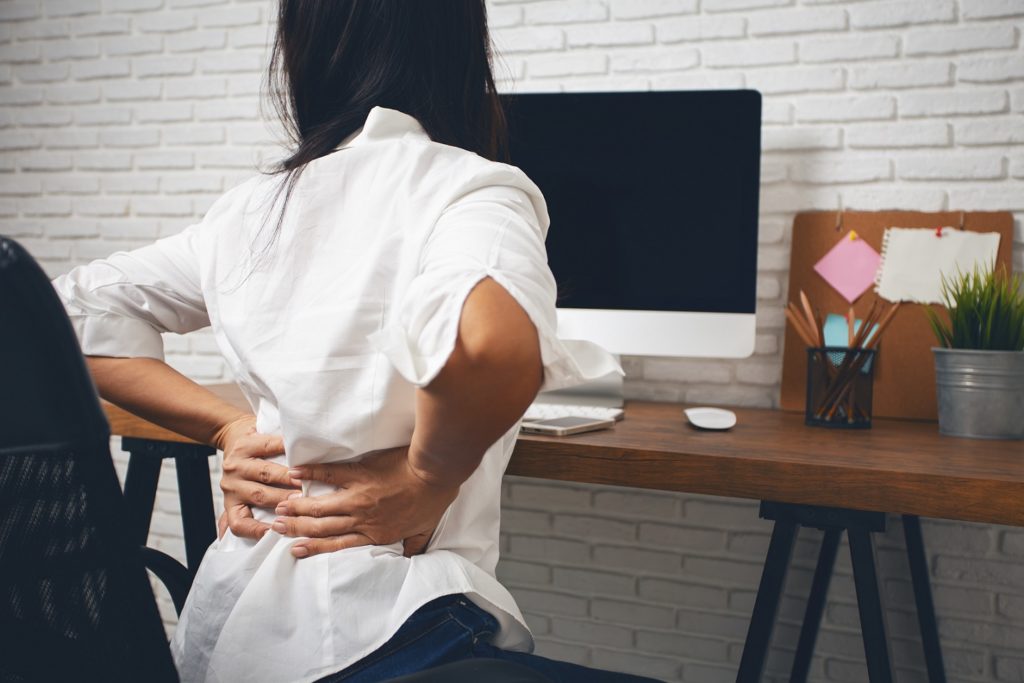Work from home has transformed the business world. More and more companies are realizing that working remotely can produce more productivity. This has many workers sitting at their desks longer than they may typically do so at the office. Also, workers may feel more comfortable and relax a bit more while working. As great as these aspects look on the surface, more than ever, we’re losing focus of what’s important – our health. By this, we mean just typical posture and sitting techniques we should follow to avoid any sort of body pain. To make this easier, we’ve come up with a list of things to pay attention to while sitting in your at-home office chair for hours on end.
Don’t Crumble Into A Ball
It may seem like a no-brainer, but stand up, and stand up as often as possible. We all tend to zone into our work and start leaning forward or slouching. Standing up just to move around a bit can help you do small stretches and keep your muscles from stiffening up. YOu also may encounter back pain before anything else. This occurs because the disks in your back contain water and a series of chemicals called glycosaminoglycans. These chemicals resist compressive forces, but water will get pushed out of your disc when you sit for an extended period of time. This will lead your discs to bulge and place pressure along your spinal nerve.
Chair Adjustments
Your chair, no matter how expensive and fancy as it may be, needs some adjusting to keep you from hurting yourself after a long period. Start with your chair’s height and make sure it lifts just enough to keep your feet flat on the floor. Your fingers should have enough space to slide between the curve of your knees near your calves and the chair. If they can’t, then find a small footrest to help elevate your feet a bit. Even something as simple as a pillow can help.
Make sure you’re close enough to your desk that you’re not overreaching out. Your keyboard should sit within an easy reach, and your elbows should sit at a 90-degree angle. This also may require you to adjust your armrests so that they don’t push your shoulders too high or leave them too low.
Finally, your monitor should sit at an arm’s length’s distance, and your eyes should line up with the center of your screen or ⅓ from the bottom of your monitor. Your screen placed improperly can lead to neck pain from leaning forward to move around too much. If you tuck your chin to your chest and slowly reverse the movement to relieve tension in your neck. To help your neck and shoulders, then tilt your head from side to side with your ears staying aligned with your shoulders. Do these movements slowly but often to keep some flexibility and relieve tension.
Back Pain and Your Chair
So, everything feels lined up, and you should be good to go, right? Well, also make sure that your bottom can tuck to the back of your chair. This will then line your back up with the chair. Your lumbar support should line up with your arch right above your waist. By placing proper lumbar support, it will prevent you from slouching or leaning forward.
Lumbar Support Cheat
Many chairs don’t have this support built-in or just don’t fit all body types. Placing a throw pillow against the back of your chair can provide you with the support you need. It’s a simple and easy way to fix the problems that many chairs have.
Wrist Pain From Strains
Wrist strain maintains as one of the most overlooked injuries you can do to yourself. When you’re using a mouse or bashing away at your keyboard, the tendons in your wrists move back and forth. As this happens, microtrauma from friction can happen, which will lead to fatigue and possible inflammation.
Your shoulders leaning forward will also contribute to wrist strain. When your shoulders lean forward, then your bloodstream to your hands and arms will decrease. You will feel a form of numbness, soreness, or a tingling sensation.
If you perform a few basic exercises such as placing your hands together in a prayer position, lift your elbows out and lower your wrists until you feel a good stretch.
You can also avoid all of this by holding your wrists horizontally above your desk when you type. Not higher than your hands or resting on your desk. Getting a wrist rest can help with this as well.
Indoff Office Chairs And Furniture
We have some of the best products out there to keep you healthy while you work at your desk. Let us know how we can supply your office and your team to keep everyone healthy and productive!
